Seaweed can sometimes be confused with Seagrass; they have significant differences.
Seaweed and Seagrass grow in the ocean, but they are different types of marine life and plants. Seaweed is an alga that usually is eaten as a food source. Seagrass is a grass that grows underwater and takes root on the ocean floor; the grass is cut and dried to weave handicraft items like baskets.
Table of Contents
- Seaweed Vs. Seagrass, The Differences Explained
- Seaweed Uses And About
- Seagrass Uses And About
- Related Content
Seaweed Vs. Seagrass, The Differences Explained
Seaweed and Seagrass can seem very similar and almost look the same, but some marked differences exist. Seaweed is usually eaten, and Seagrass is cut and dried for home furnishing in Home Decor products.
The following chart explains some of the differences between Seaweed and Seagrass.
Differences Explained Between Seaweed And Seagrass
| Feature | Seagrass | Seaweed |
| Definition | Marine flowering plant | Marine Macroalgae |
| Species | More than 60 species worldwide | 5,000 to 6,000 species worldwide |
| Plant Kingdom | Plantae | Protista, Plantae, Chromista and Bacteria |
| Vascular Tissue | Non-vascular algae | A Vascular Plant |
| Roots, Stems, Leaves | Lacks true roots, stems, and leaves | Has true roots, stems, and leaves |
| Flowers | The plant does not flower | Produces flowers |
| Seeds | It does not produce seeds | Produces seeds |
| Fruits | Produces no fruits | Produces fruits |
| Uses | Many kinds of Seaweed are eaten. | Usually dried, then can be woven into baskets and other home decor products. |
As you can see from this list, even though Seaweed and Seagrass may seem very similar, there are some significant differences. One of the big differences that you can tell between the two is that Seaweed does not have a root in the plant, whereas Seagrass does.
Also, the Seagrass plant will bear fruit and have flowers on it. The Seaweed does not bear fruit or have flowers on it.
The Seaweed plant is an algae type of plant. Seagrass is a flowering plant with roots and grows on the ocean floor.
Seaweed Uses And About
Seaweed is an edible food source and part of the diet in many parts of the world. Seaweed has been used for culinary and medicinal purposes in Japan, China, Korea, and other countries. Today, Seaweed has become more popular, especially with the eating of Sushi for Japanese cuisine.
Here are some of the significant types of Seaweed that are eaten:
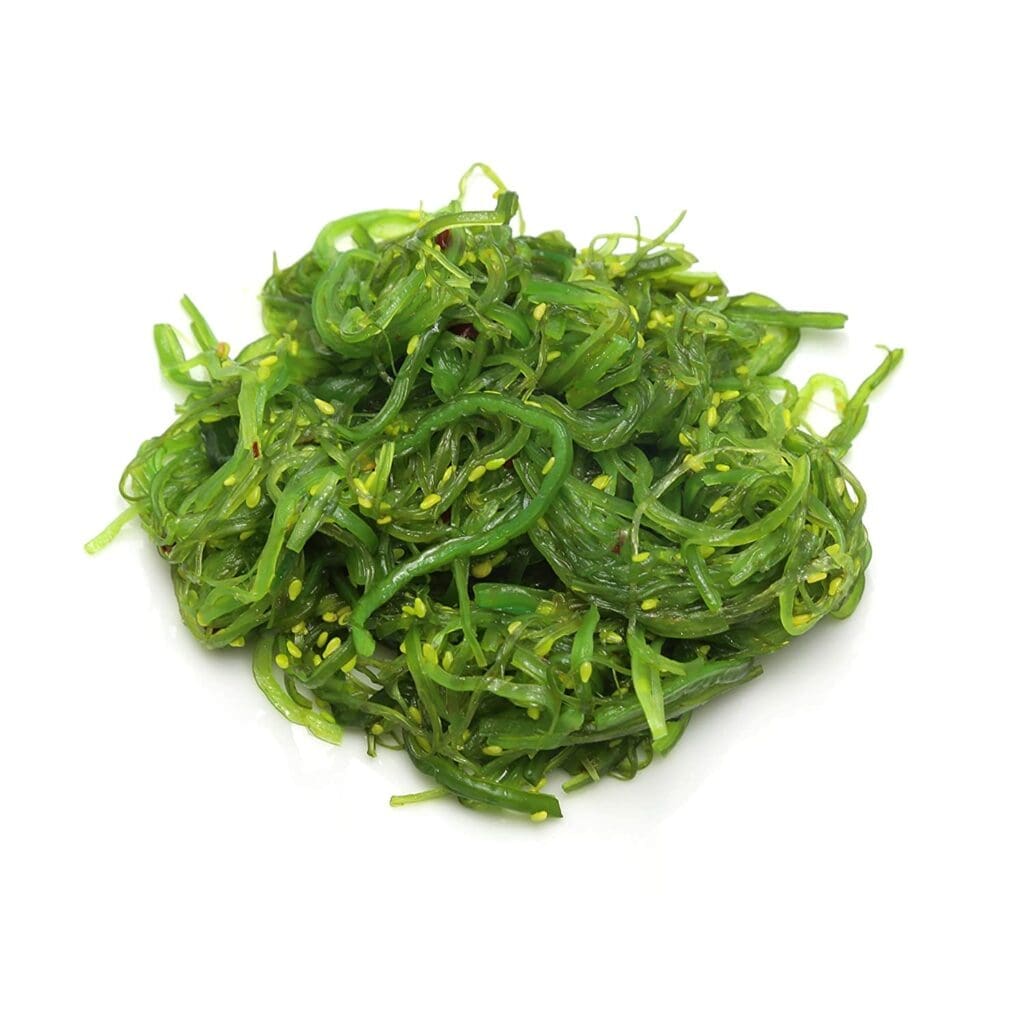
- Wakame – Wakame is best known as sea mustard and is found in Japanese miso soup. It is a dark green seaweed.
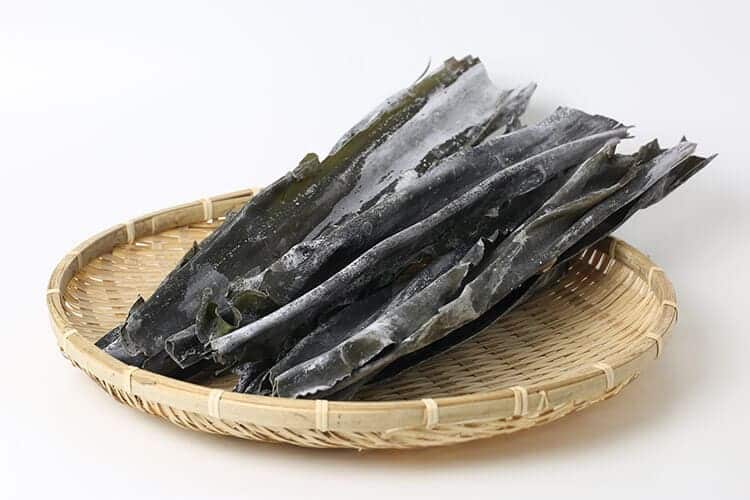
- Kombu – Kombu is a kind of kelp, one of the essential edible seaweeds in East Asia. Kombu has become very popular as a fermented drink. But it is also steeped in water to make Japanese tea. Kombu is the foundation of many Japanese dishes.
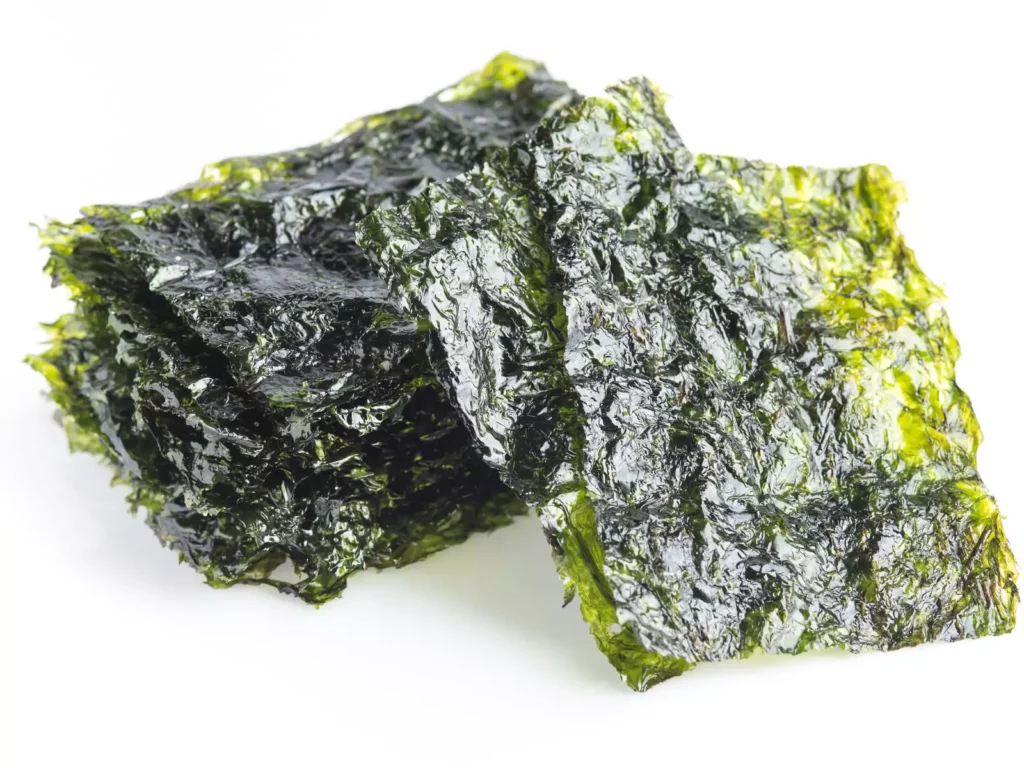
- Nori – Nori is a purple-colored seaweed that will turn a dark green when dried. Nori is pressed into thin sheets of paper and used to make many popular Japanese dishes, such as sushi. Nori, called green nori, is used to make a seaweed salad.
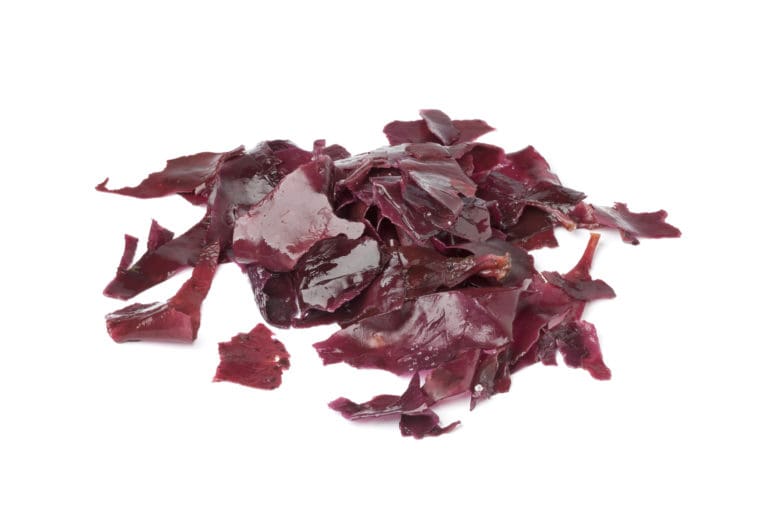
- Dulse – Dulse is a reddish kind of Seaweed from the colder waters of the North Atlantic and North Pacific. This kind of Seaweed grows attaches to rocks. Dulse was first harvested in Scotland and Iceland over 1,000 years ago and is fried up crispy like bacon. The Irish used duise to make soda bread.
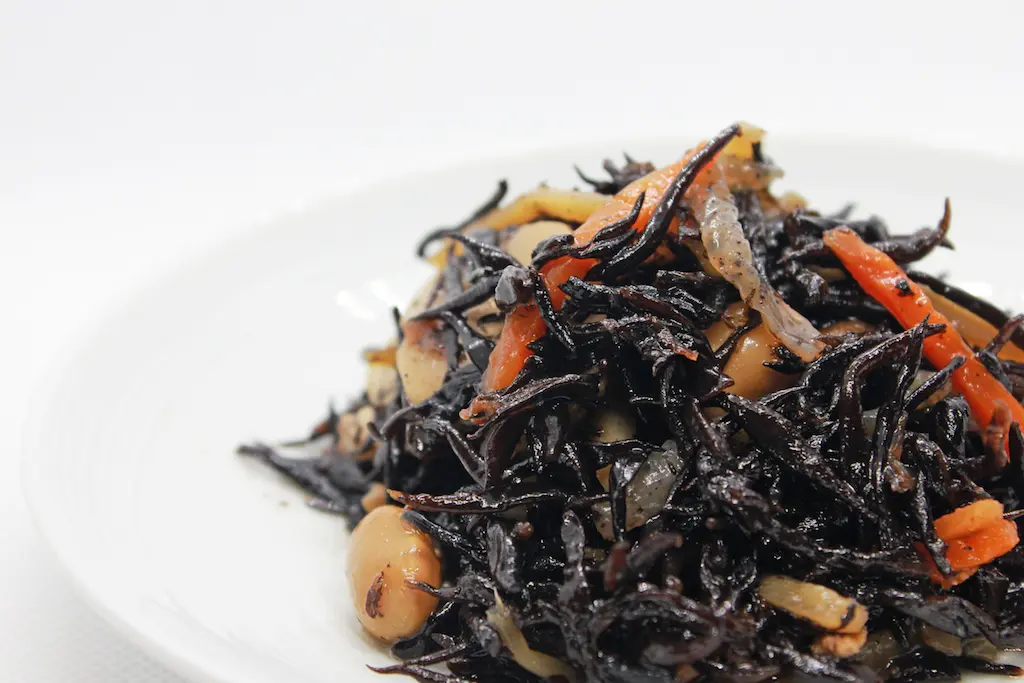
- Hijiki – Hijiki seaweed is a brown color that looks like little thin twigs when dried. It can be boiled or is often fried with a fish stir-fry.
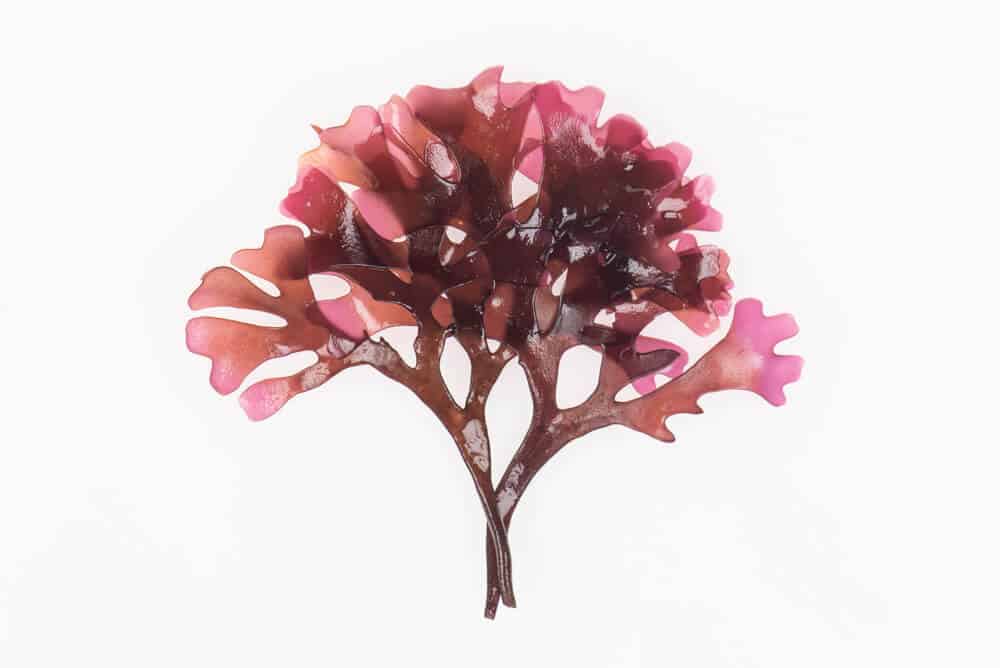
- Irish Moss – Irish moss is a purple or red algae native to the Atlantic shorelines of the USA and Europe. It can be used in desserts such as tapioca or ice cream due to its natural thickening qualities.
As you can see from this list, Seaweed is an alga used mainly for eating. Many cultures worldwide have harvested, dried, and eaten Seaweed for thousands of years.
Seagrass Uses And About
Seagrass is a flowering plant that will grow entirely underwater. Seagrass will thrive in salty water, usually found in shallow and sheltered coastal waters with sand or a mud bottom. Most species will have submarine pollination; Seagrass can complete their lifestyle cycle entirely underwater.
Seagrass is harvested mainly for basket weaving for Home Decor and Home furnishing products. The cutting of the Seagrass does not damage marine life or the environment.
Here are some attributes of Seagrass and why Seagrass is so special:
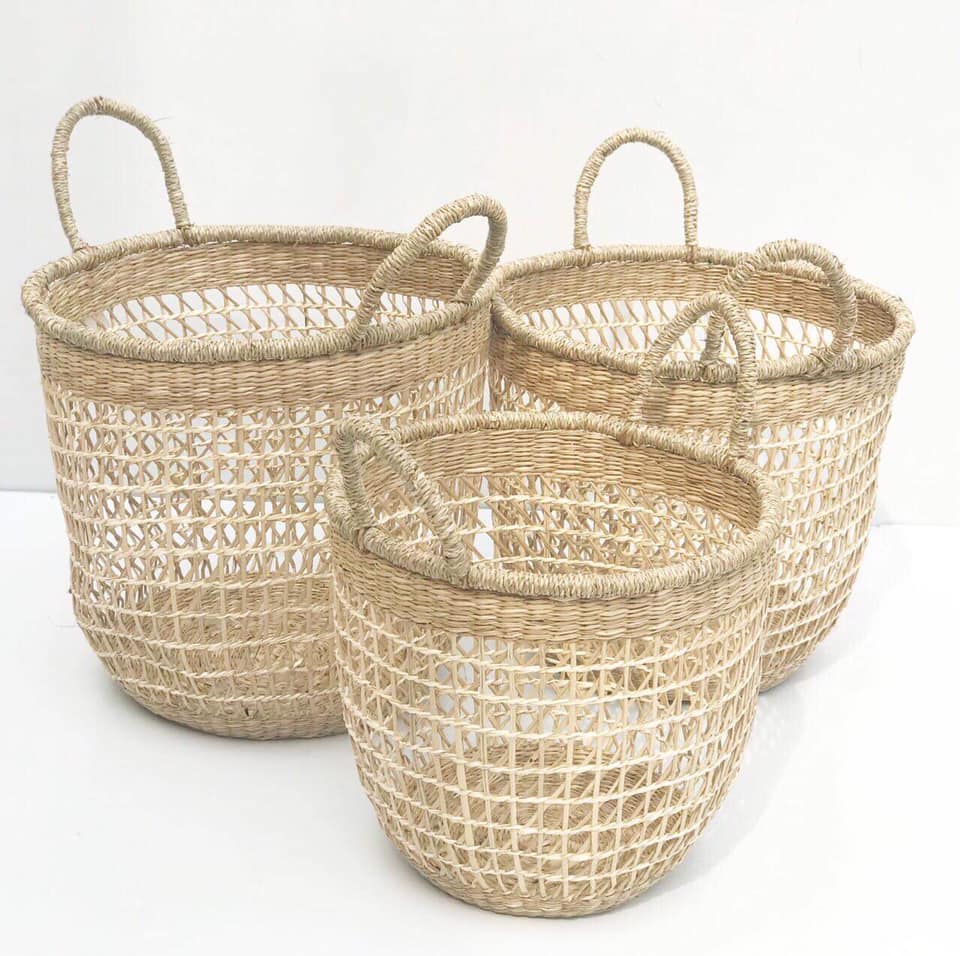
- Dried Plant – Seagrass is dried, and then once it has dried, it can be split twisted into rope, and then woven. It is a highly versatile natural material.

- Can Be Dyed – In the production of basket weaving, Seagrass can be dyed. Seagrass is able to handle the colored dyes very well.
- Grows Rapidly – Seagrass grows back rapidly; it is one of the fastest-growing plants. The cutting and the harvesting of Seagrass does not damage marine life because the plant will grow back very fast.
- Marine Food – Many Marine life and species depend upon Seagrass. Seagrass is an essential part of the entire marine ecosystem. That is also why when Seagrass is cut here in Vietnam, it is only cut in certain areas, and those that are harvesting the seagrass are very careful not to damage the marine or sea life.
Seagrass is not the same as Seaweed; both were very different plants. The only thing that Seagrass and Seaweed have in common is they both use the name Sea in their names, and both grow underwater.
Seagrass and Seaweed have different uses; one is used mainly for food, and the other is used to weave baskets such as home decor baskets or other home decor accessories.
Both Seaweed and Seagrass have been used for thousands of years. They both have ancient usage and have been used within their various cultures worldwide.
Find out more about how Mondoro can help you create, develop, and manufacture excellent home decor and home furniture products – including seagrass products – don’t hesitate to contact me, Anita. Check out my email by clicking here or become a part of our community and join our newsletter by clicking here.
Mondoro gives out a FREE Lookbook to anyone interested. You can receive a copy of our latest Lookbook by clicking here.
Listen to our Podcast called Global Trade Gal. You can find it on all major podcast platforms. Try out to listen to one of our podcasts by clicking here.
Subscribe to our Mondoro Company Limited YouTube Channel filled with great videos and information by clicking here.
Related Content
Seagrass Baskets Vs. Sweetgrass Baskets
Sweetgrass is a grass growing above the ground and is native to North America and Eurasia; the material is dried to be woven into baskets. Seagrass is a marine life grass that grows completely underwater in salty water shallow water areas. Seagrass is harvested, cut, and dried to hand weave baskets.
You can discover more by reading Seagrass Baskets Vs. Sweetgrass Baskets by clicking here.
Seagrass Baskets Smell, Tips To Clear Out The Odor
Over time the seagrass basket smell will almost disappear. If you cannot wait a few weeks for the smell to disappear, there are some things you can do to help the smell go away. Like most baskets woven by natural materials, seagrass baskets do well if you put them in the sun to air them out.
You can discover more by reading Seagrass Baskets Smell, Tips To Clear Out The Odor by clicking here.
5 Types of Seagrass Weaving Styles You Need to Know
A seagrass rug is a great natural addition to your home.
There are five basic seagrass weaving materials or styles used to weave all seagrass baskets and other Home Decor products. All of these use the seagrass material, but the material they use can give the seagrass product a unique look and feel.
To find out more about the 5 Types of Seagrass Weaving Styles, You Need to Know by clicking this link.

